In Photos: The Oil Spill North Dakota Tried to Keep Secret
On September 29th, Steve Jensen, a farmer in northwest North Dakota, discovered crude oil "spewing and bubbling 6 inches high" out on his field while he was harvesting wheat. The spewing oil came from a break in Tesoro Corporation's underground pipeline which carries crude oil from Bakken shale formation (fracking for oil) to Columbus, North Dakota. By the time clean up crews made it out to Jensen's field, over 20,000 barrels of oil had spilled, making this one of the largest spills in state history.
It took nearly two weeks after Jensen first reported the spill for the state to finally make the news public, and as you can see from the exclusive Greenpeace photos below, the damage is extensive.
North Dakota and Bakken have become coveted areas for oil executives bent on getting the most extreme and remote fossil fuels out of the ground now that the "easy" reserves are on the decline. As we saw in Mayflower, Arkansas earlier this year, pipelines spill, and so as long as we let oil companies keep us locked into these forms of extreme fossil fuels, we'll continue to see spills like these.
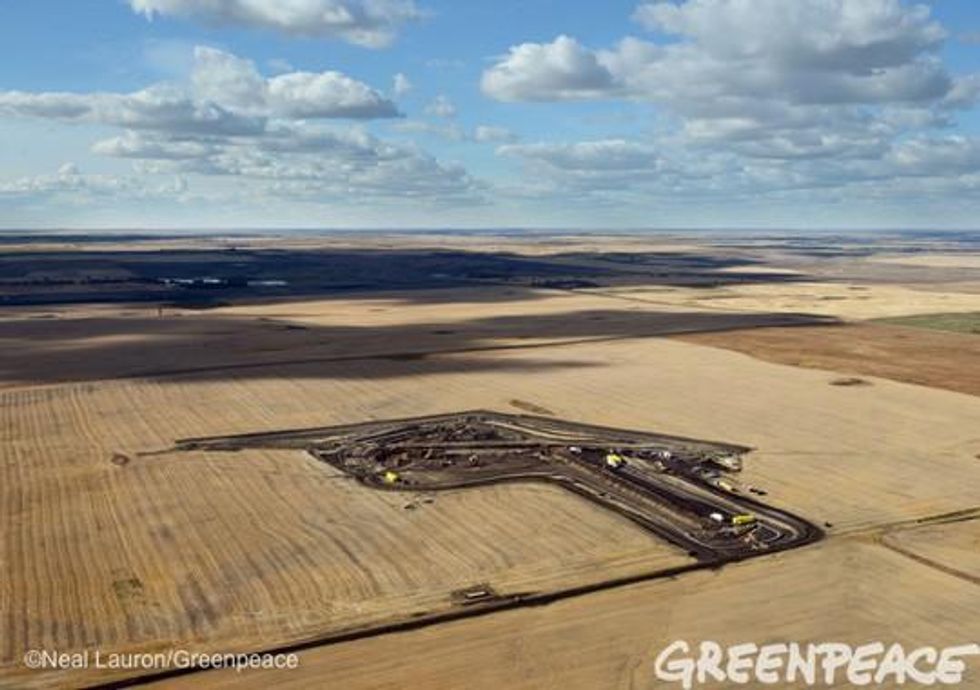
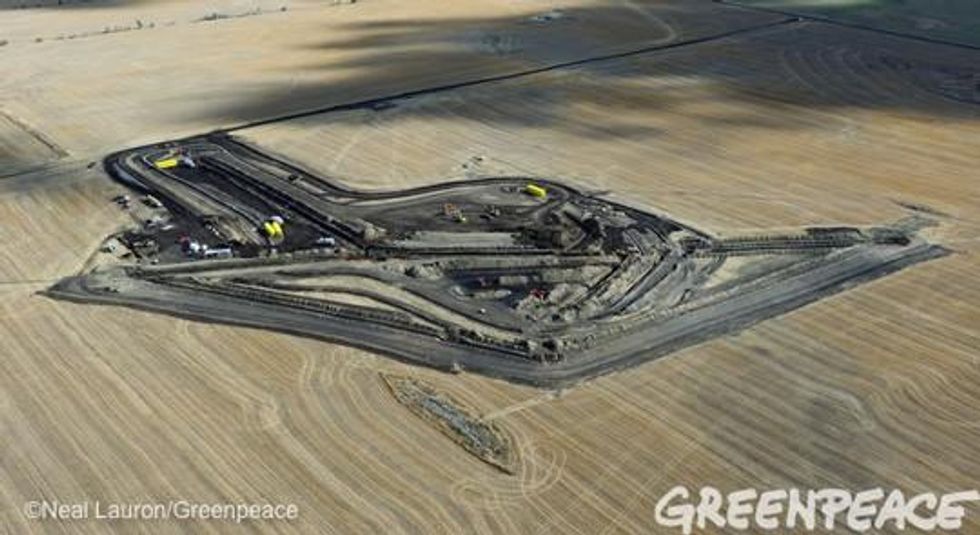
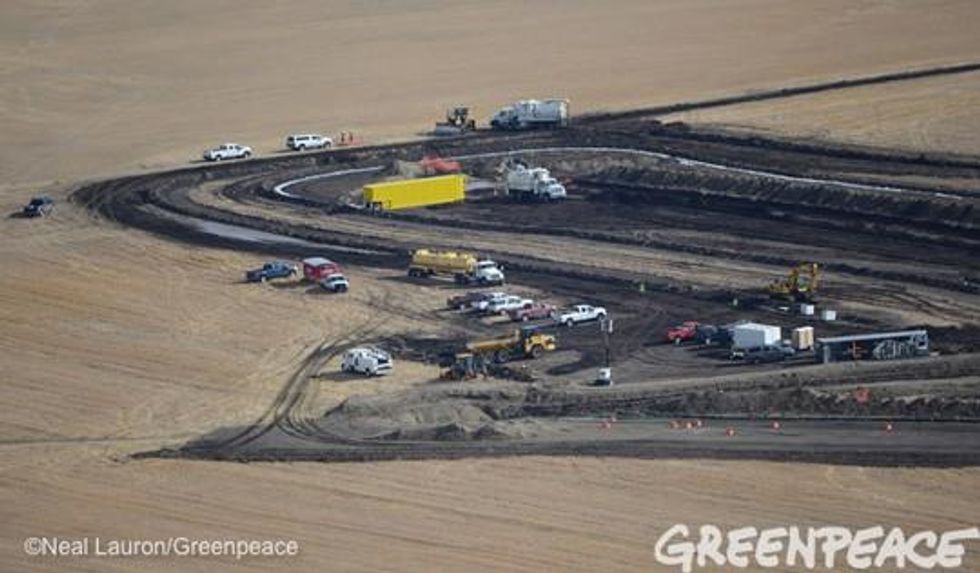
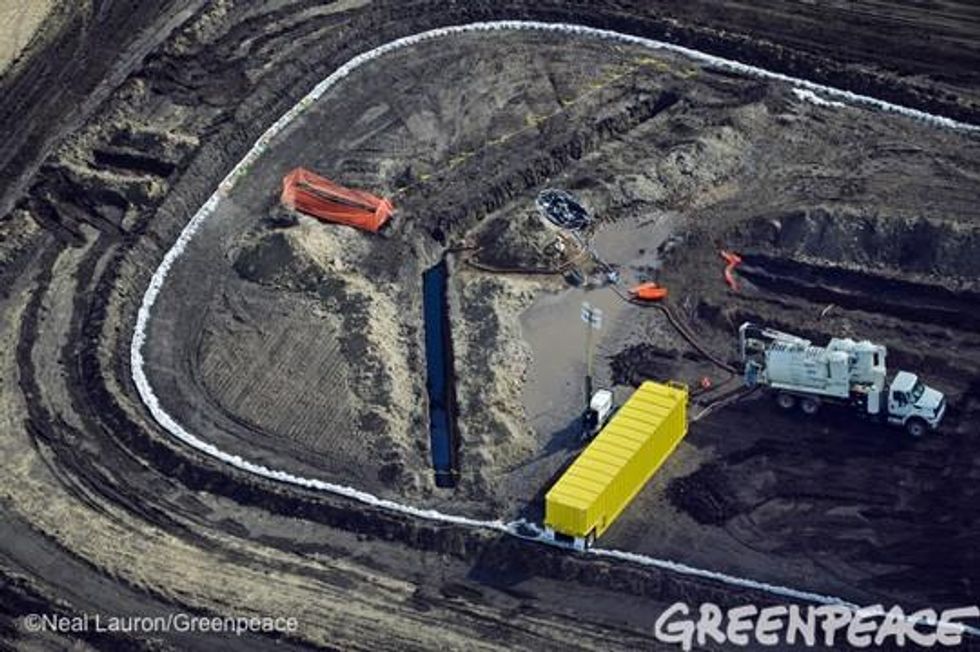
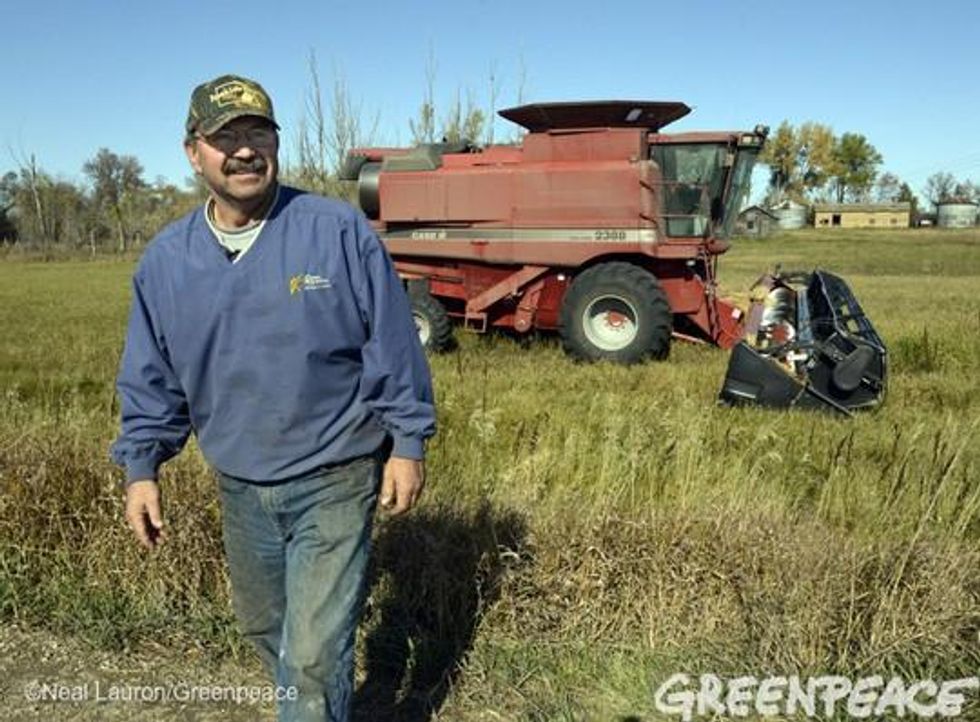
An Urgent Message From Our Co-Founder
Dear Common Dreams reader, The U.S. is on a fast track to authoritarianism like nothing I've ever seen. Meanwhile, corporate news outlets are utterly capitulating to Trump, twisting their coverage to avoid drawing his ire while lining up to stuff cash in his pockets. That's why I believe that Common Dreams is doing the best and most consequential reporting that we've ever done. Our small but mighty team is a progressive reporting powerhouse, covering the news every day that the corporate media never will. Our mission has always been simple: To inform. To inspire. And to ignite change for the common good. Now here's the key piece that I want all our readers to understand: None of this would be possible without your financial support. That's not just some fundraising cliche. It's the absolute and literal truth. We don't accept corporate advertising and never will. We don't have a paywall because we don't think people should be blocked from critical news based on their ability to pay. Everything we do is funded by the donations of readers like you. Will you donate now to help power the nonprofit, independent reporting of Common Dreams? Thank you for being a vital member of our community. Together, we can keep independent journalism alive when it’s needed most. - Craig Brown, Co-founder |
On September 29th, Steve Jensen, a farmer in northwest North Dakota, discovered crude oil "spewing and bubbling 6 inches high" out on his field while he was harvesting wheat. The spewing oil came from a break in Tesoro Corporation's underground pipeline which carries crude oil from Bakken shale formation (fracking for oil) to Columbus, North Dakota. By the time clean up crews made it out to Jensen's field, over 20,000 barrels of oil had spilled, making this one of the largest spills in state history.
It took nearly two weeks after Jensen first reported the spill for the state to finally make the news public, and as you can see from the exclusive Greenpeace photos below, the damage is extensive.
North Dakota and Bakken have become coveted areas for oil executives bent on getting the most extreme and remote fossil fuels out of the ground now that the "easy" reserves are on the decline. As we saw in Mayflower, Arkansas earlier this year, pipelines spill, and so as long as we let oil companies keep us locked into these forms of extreme fossil fuels, we'll continue to see spills like these.





On September 29th, Steve Jensen, a farmer in northwest North Dakota, discovered crude oil "spewing and bubbling 6 inches high" out on his field while he was harvesting wheat. The spewing oil came from a break in Tesoro Corporation's underground pipeline which carries crude oil from Bakken shale formation (fracking for oil) to Columbus, North Dakota. By the time clean up crews made it out to Jensen's field, over 20,000 barrels of oil had spilled, making this one of the largest spills in state history.
It took nearly two weeks after Jensen first reported the spill for the state to finally make the news public, and as you can see from the exclusive Greenpeace photos below, the damage is extensive.
North Dakota and Bakken have become coveted areas for oil executives bent on getting the most extreme and remote fossil fuels out of the ground now that the "easy" reserves are on the decline. As we saw in Mayflower, Arkansas earlier this year, pipelines spill, and so as long as we let oil companies keep us locked into these forms of extreme fossil fuels, we'll continue to see spills like these.






